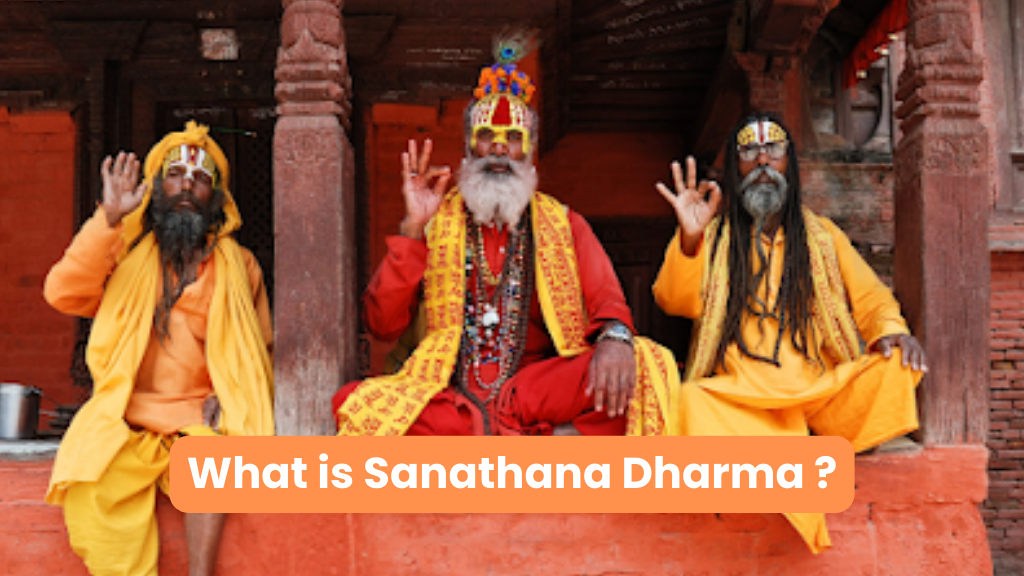Sanathana Dharma, often referred to as Hinduism, is a rich and ancient spiritual tradition that has withstood the test of time. In this blog post, we aim to demystify the essence of Sanathana Dharma in an easily understandable way, exploring its fundamental principles and guiding philosophy.
What Is Sanathana Dharma ?
- Origin and Meaning: Sanathana Dharma, translated as the ‘Eternal Order’ or ‘Eternal Law,’ is more than just a religion; it’s a way of life that encompasses a vast array of beliefs and practices. Rooted in the Indian subcontinent, it is a timeless tradition that seeks to understand the fundamental nature of existence.
- Core Concepts: At its core, Sanathana Dharma embraces the idea of Dharma, which can be understood as righteousness or duty. It encourages individuals to live a life in accordance with ethical and moral principles, promoting harmony and balance.
- Deities and Diversity: Sanathana Dharma is known for its diverse pantheon of deities, each representing different aspects of the divine. From Brahma, the creator, to Vishnu, the preserver, and Shiva, the destroyer, these deities symbolize the various forces at play in the universe.
- Paths to Liberation: The tradition recognizes multiple paths (Yogas) for spiritual realization, catering to the diverse needs and temperaments of individuals. These paths include Karma Yoga (path of action), Bhakti Yoga (path of devotion), Jnana Yoga (path of knowledge), and Raja Yoga (path of meditation).
- Reincarnation and Karma: Central to Sanathana Dharma is the belief in reincarnation, where the soul undergoes a cycle of birth and rebirth. The concept of Karma, the law of cause and effect, plays a crucial role, emphasizing that our actions in this life shape our destiny in future lives.
- Sacred Texts: The rich literary heritage of Sanathana Dharma is encapsulated in sacred texts such as the Vedas, Upanishads, Bhagavad Gita, and the epics Ramayana and Mahabharata. These texts provide spiritual wisdom, ethical guidance, and narratives that inspire.
- Respect for Nature: Sanathana Dharma recognizes the divinity in all of creation, fostering a deep respect for nature. This ecological consciousness encourages sustainable living and a harmonious coexistence with the environment.
Final Words : In essence, Sanathana Dharma is a holistic way of life that transcends the boundaries of time and space. It offers a profound understanding of existence, promoting virtues, diversity, and the pursuit of spiritual growth. By unraveling its core concepts, we can appreciate the beauty and depth of this ancient tradition, finding relevance and inspiration for our lives today.
